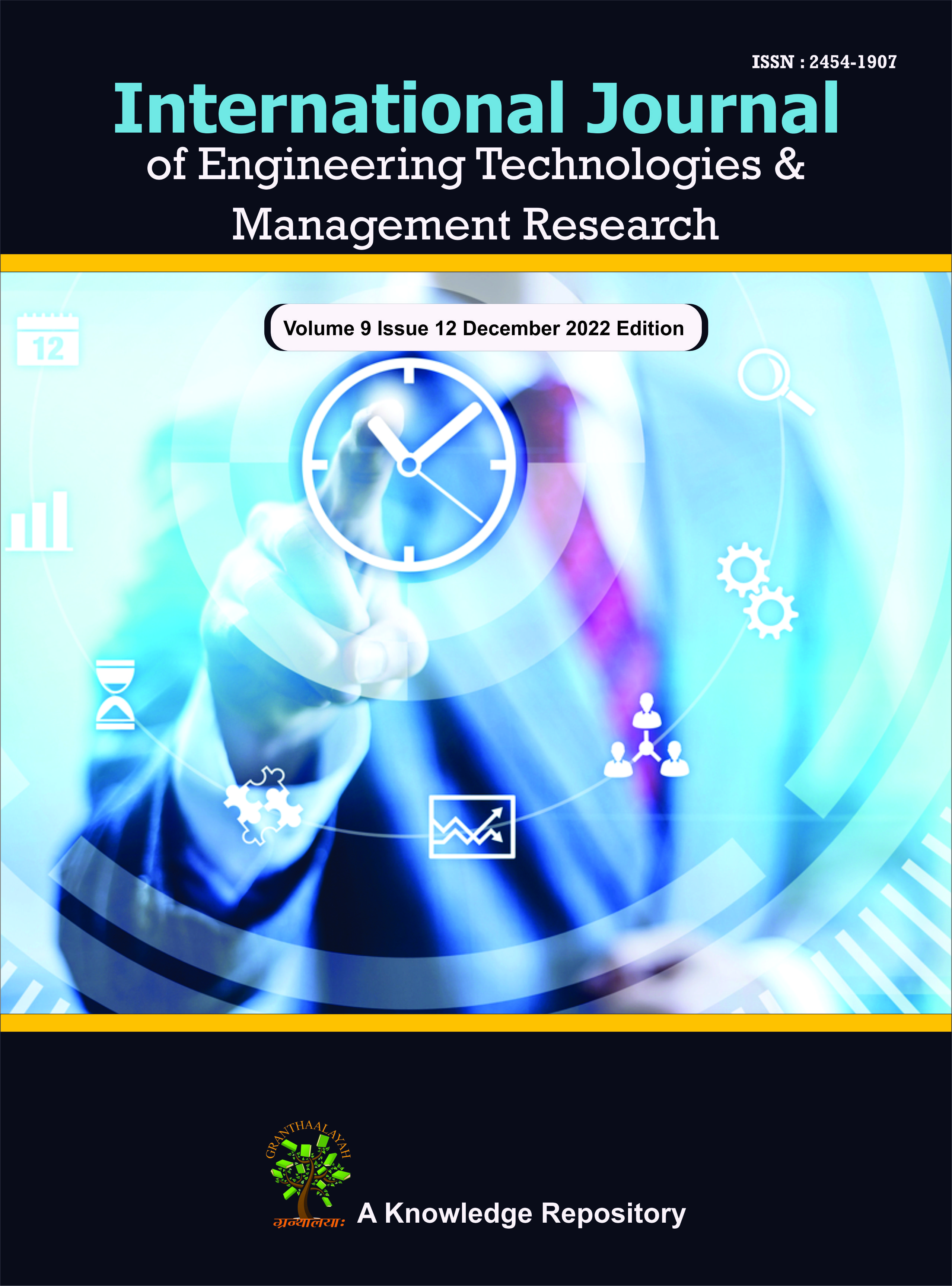ANALYSIS OF OPTIC CHIASM RADIATION DOSE FOR NASOPHARYNGEAL CANCER (NPC) PATIENTS WITH INTENSITY MODULATED RADIOTHERAPY (IMRT) TECHNIQUE BASED ON DOSE VOLUME HISTOGRAM (DVH) GRAPH FOR THERAPY USING LINAC
DOI:
https://doi.org/10.29121/ijetmr.v9.i12.2022.1265Keywords:
Radiotherapy, DVH, NPC, OAR, PTVAbstract
Motivation/Background: Radiotherapy is the standard therapy that uses ionizing rays for the treatment of malignancies. However, in some cases of nasopharyngeal cancer (NPC), the location of the tumor pushes to the base of the brain until it reaches the optic chiasma. The optic chiasm as part of a healthy organ around the target irradiation becomes a dangerous organ or a risk organ (OAR) so it needs to be considered in the case of radiation therapy for NPC. This study aims to consider dosing in patients to fulfill radiation protection. IMRT technique is believed to maximize the success of therapy in cases of NPC.
Method: In this study, secondary data was used by looking at the DVH (Dose Volume Histogram) graph from the results of radiation planning for NPC patients using the IMRT (Intensity Modulated Radiotherapy) technique. Data analysis was carried out on PTV and OAR dose values NPC patients at Ken Saras Hospital on the DVH chart that was adjusted to the wishes used, namely The International Commission on Radiation Units and Measurements (ICRU) Report 62 (1999) for PTV doses and QUANTEC for doses OAR.
Results: The results of the analysis showed that of the 15 patient data analyzed, there were 10 patients with a percentage of 66.67% who received radiation doses that were in accordance with the ICRU Report 62 reference (95-107%) while patients who received less than optimal doses (< 95%) there were 5 people with a percentage of 33.33% while the maximum dose received by OAR for the optic chiasm in NPC patients who had complied with QUANTEC rules overall there were 7 patients with a percentage of 46.67% while there were 8 patients who received doses exceeding the QUANTEC limit with a percentage of 53 ,33% risk of receiving radiation side effects by 7-20%..
Conclusions: there were patients who received doses exceeding QUANTEC as much as 53.33%
Downloads
References
Febrietri, O., Milvita, D., and Diyona, F. (2020). Analisis Dosis Radiasi Paru-Paru Pasien Kanker Payudara Dengan Teknik Three-Dimensional Conformal Radiation Therapy (3D-CRT) Berdasarkan Grafik Dose Volume Histogram (DVH). Jurnal Fisika Unand, 9(1), 110–117. https://doi.org/10.25077/jfu.9.1.110-117.2020. DOI: https://doi.org/10.25077/jfu.9.1.110-117.2020
Foroozan, R., Bhatti, M. T., Falardeau, J., Gordon, L. K., Lee, M. S., Subramanian, P. S., and Kawasaki, A. (2016). Neuro-Opthalmology. In L. B, Cantor, C. J. Rapuano, and G. A. Cioffi, Basic And Clinical Science Center. American Academy Of Ophthalmology, 29–34.
Kemenkes, R. I. (2017). Kanker Nasofaring. Jakarta : Komite Penanggulangan Kanker Nasional (KPKN).
Kemenkes, R. I., and Kanker, K. P. (2017). Nasional (KPKN). Kanker Nasofaring
Kementrian Kesehatan, R. I. (2020). Jenis Kanker Ini Rentan Menyerang Manusia.
Kodrat, H., and Novirianthy, R. (2016). Prinsip Dasar Radiotherapi. Jurnal Medika, 318–323.
Panular, B. D. (2012). Perbandingan Hasil Pengukuran Parameter Berkas Sinar-X dan Elektron Keluaran Pesawat LINAC Menggunakan Detektor Matriks dan Fantom Air [Tesis], Program Studi Magister Fisika, Kekhususan Fisika Medis, FMIPA. Universitas Indonesia.
Pratiwi, A., and Imanto, M. (2020). Karsinoma Nasofaring Dengan Multiple Cranial Nerve Palsy Pada Pasien Wanita Usia 52 Tahun. Medula, 609–615.
Sardjito, (2020). FKKMK UGM. Laporan Kanker Berbasis Rumah Sakit (RKBR) Dr.Sardjito.
Sinambela, A., and Supriana, N. (2018). Revolusi Teknik Radioterapi Pada Karsinoma Nasofaring. Radioterapi and Onkologi Indonesia, 9(1), 20–28. https://doi.org/10.32532/jori.v9i1.71. DOI: https://doi.org/10.32532/jori.v9i1.71
Walter, and Miller. (2019). Textbook of Radiotherapy Radiation Physics, Therapy and Oncology, 8nd ed. Elsevie.
Zaccagna, F., Pizzuti, V., Barone, D. G., Siotto, P., Saba, L., Raz, E., Matys, T., and Massoud, T. F. (2018). In and around the optic chiasm:a pictorial review of neuroimaging. Neurographics, 1–2. DOI: https://doi.org/10.3174/ng.1700068
Published
How to Cite
Issue
Section
License
Copyright (c) 2022 Azibatul Habibah, Evi Setiawati, Asep Yoyo Wardaya, Agus Margiantono, Galih Puspa Saraswati

This work is licensed under a Creative Commons Attribution 4.0 International License.
License and Copyright Agreement
In submitting the manuscript to the journal, the authors certify that:
- They are authorized by their co-authors to enter into these arrangements.
- The work described has not been formally published before, except in the form of an abstract or as part of a published lecture, review, thesis, or overlay journal.
- That it is not under consideration for publication elsewhere.
- That its release has been approved by all the author(s) and by the responsible authorities – tacitly or explicitly – of the institutes where the work has been carried out.
- They secure the right to reproduce any material that has already been published or copyrighted elsewhere.
- They agree to the following license and copyright agreement.
Copyright
Authors who publish with International Journal of Engineering Technologies and Management Research agree to the following terms:
- Authors retain copyright and grant the journal right of first publication with the work simultaneously licensed under a Creative Commons Attribution License (CC BY-SA 4.0) that allows others to share the work with an acknowledgment of the work's authorship and initial publication in this journal.
- Authors can enter into separate, additional contractual arrangements for the non-exclusive distribution of the journal's published version of the work (e.g., post it to an institutional repository or edit it in a book), with an acknowledgment of its initial publication in this journal.
- Authors are permitted and encouraged to post their work online (e.g., in institutional repositories or on their website) before and during the submission process, as it can lead to productive exchanges, as well as earlier and greater citation of published work.
For More info, please visit CopyRight Section






























